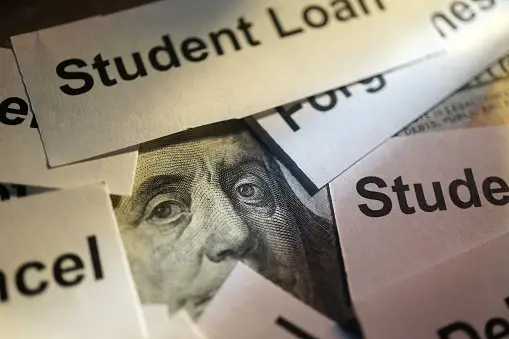Financing higher education through student loans has become an essential pathway for many students to achieve their academic goals. However, understanding the maximum student loan amount for a lifetime is crucial for effective financial planning. The limits on student loans vary based on factors such as the type of loan, academic level, dependency status, and cost of attendance. This article delves into the intricacies of federal and private student loan limits, the factors influencing these limits, and strategies for managing student loan debt. Additionally, it explores long-term strategies for repayment and the impact of legislative changes on student loan policies. By gaining a comprehensive understanding of these aspects, students and their families can make informed decisions about financing higher education and managing debt responsibly.
Understanding Student Loan Limits
Student loan limits are the maximum amount of money a student can borrow to finance their education. These limits are determined by the type of loan, the student’s academic level, and other factors such as dependency status and financial need. There are two main categories of student loans: federal and private.
Federal Student Loans
Federal student loans are funded by the U.S. Department of Education and generally offer lower interest rates and more flexible repayment options compared to private loans. There are several types of federal student loans, each with its own borrowing limits.
Direct Subsidized Loans
Direct Subsidized Loans are available to undergraduate students with financial need. The government pays the interest on these loans while the student is in school at least half-time, during the grace period, and during deferment periods.
- Annual Loan Limits:
- First-year undergraduate: $3,500
- Second-year undergraduate: $4,500
- Third-year and beyond undergraduate: $5,500
- Lifetime Aggregate Loan Limit: $23,000
Direct Unsubsidized Loans
Direct Unsubsidized Loans are available to both undergraduate and graduate students, regardless of financial need. Students are responsible for paying the interest on these loans at all times.
- Annual Loan Limits:
- Dependent undergraduate students:
- First-year: $5,500 (no more than $3,500 in subsidized loans)
- Second-year: $6,500 (no more than $4,500 in subsidized loans)
- Third-year and beyond: $7,500 (no more than $5,500 in subsidized loans)
- Independent undergraduate students and dependent students whose parents cannot obtain PLUS Loans:
- First-year: $9,500 (no more than $3,500 in subsidized loans)
- Second-year: $10,500 (no more than $4,500 in subsidized loans)
- Third-year and beyond: $12,500 (no more than $5,500 in subsidized loans)
- Graduate and professional students: $20,500
- Lifetime Aggregate Loan Limit:
- Dependent undergraduate students: $31,000 (no more than $23,000 in subsidized loans)
- Independent undergraduate students and dependent students whose parents cannot obtain PLUS Loans: $57,500 (no more than $23,000 in subsidized loans)
- Graduate and professional students: $138,500 (no more than $65,500 in subsidized loans; includes loans for undergraduate study)
Direct PLUS Loans
Direct PLUS Loans are available to graduate or professional students and parents of dependent undergraduate students. These loans require a credit check and have higher interest rates compared to Direct Subsidized and Unsubsidized Loans.
- Annual Loan Limits: The maximum amount is the cost of attendance (COA) minus any other financial aid received.
- Lifetime Aggregate Loan Limit: There is no specific lifetime limit for Direct PLUS Loans, but they are subject to the total COA.
Perkins Loans (No Longer Available)
The Perkins Loan program ended in 2017, but some borrowers may still be repaying these loans. They were available to undergraduate and graduate students with exceptional financial need.
- Annual Loan Limits:
- Undergraduate students: Up to $5,500
- Graduate and professional students: Up to $8,000
- Lifetime Aggregate Loan Limit:
- Undergraduate students: $27,500
- Graduate and professional students: $60,000 (including undergraduate loans)
Private Student Loans
Private student loans are offered by banks, credit unions, and other private lenders. They typically have higher interest rates and fewer repayment options compared to federal loans. Private loan limits vary widely by lender and are often based on the student’s creditworthiness and the COA.
- Annual Loan Limits: Varies by lender, but generally up to the COA
- Lifetime Aggregate Loan Limit: Varies by lender; some may set a cap, while others may not have a specific limit
Factors Influencing Student Loan Limits
Several factors influence the maximum amount a student can borrow in their lifetime, including the type of loan, the student’s dependency status, and the cost of attendance.
Dependency Status
Federal student loan limits are different for dependent and independent students. Dependent students typically have lower borrowing limits because it is assumed that their parents will contribute to their education costs. Independent students, who are responsible for their own finances, are eligible for higher loan amounts.
Academic Level
Loan limits increase as students progress through their academic careers. First-year undergraduates have lower borrowing limits than second-year students, and limits increase further for third-year and beyond students. Graduate and professional students have the highest loan limits due to the higher costs associated with advanced degrees.
Financial Need
Financial need plays a significant role in determining eligibility for subsidized loans. Students with greater financial need may qualify for higher amounts of subsidized loans, while those with less need may rely more on unsubsidized loans or private loans.
Cost of Attendance
The COA includes tuition, fees, room and board, books and supplies, transportation, and personal expenses. Federal and private loans often allow students to borrow up to the COA, minus any other financial aid received.
Managing Student Loan Debt
Managing student loan debt effectively is crucial to avoid financial difficulties post-graduation. Here are some strategies to help manage and repay student loans.
Understand Your Loan Terms
Before borrowing, understand the terms and conditions of each loan, including interest rates, repayment schedules, and any fees. This knowledge can help you make informed decisions about borrowing and repayment.
Budgeting
Create a budget that includes your monthly loan payments. Prioritize loan payments along with other essential expenses to ensure you stay on track.
Explore Repayment Plans
Federal loans offer several repayment plans, including standard, graduated, and income-driven repayment plans. Choose a plan that fits your financial situation. Income-driven repayment plans can be particularly beneficial if your income is low relative to your debt.
Consider Refinancing
Refinancing can help lower your interest rate and reduce your monthly payments. However, it often requires a good credit score and may involve switching from federal to private loans, which means losing federal benefits like income-driven repayment plans and loan forgiveness.
Loan Forgiveness Programs
Investigate loan forgiveness programs, especially if you work in public service or specific fields like education or healthcare. Programs such as Public Service Loan Forgiveness (PSLF) can forgive the remaining balance on your federal loans after a certain number of qualifying payments.
Make Extra Payments
If possible, make extra payments toward your loan principal. This can reduce the overall interest paid and help you pay off your loans faster.
Avoid Default
Missing payments can lead to loan default, which has serious consequences, including damage to your credit score and wage garnishment. If you’re struggling to make payments, contact your loan servicer to explore options like deferment, forbearance, or changing your repayment plan.
Long-Term Strategies for Managing Student Loan Debt
Effectively managing student loan debt doesn’t end with graduation; it requires ongoing strategies to ensure financial health. Here are some long-term approaches to consider:
Regularly Review Your Loan Situation
Keep track of your loan balances, interest rates, and repayment terms. Regular reviews will help you stay informed about your debt and adjust your financial plans as necessary.
Automate Payments
Set up automatic payments to ensure you never miss a payment. Some lenders offer a discount on your interest rate if you enroll in autopay, which can save you money over the life of the loan.
Increase Your Payments as Income Grows
As your income increases over time, try to increase your loan payments. Even small increments can significantly reduce the amount of interest you pay and help you pay off your loans faster.
Maintain a Healthy Credit Score
A good credit score can help you refinance loans at better interest rates. To maintain a healthy credit score, pay your bills on time, keep your credit card balances low, and avoid opening too many new credit accounts in a short period.
Invest in Your Career
Investing in your career through additional education, certifications, or professional development can lead to higher earning potential, making it easier to manage and repay your student loan debt.
Specific Loan Forgiveness Programs
Several loan forgiveness programs can alleviate the burden of student loan debt, especially for those in specific careers or public service. Here are a few notable programs:
Public Service Loan Forgiveness (PSLF)
PSLF is available to borrowers who work full-time for a qualifying public service employer and make 120 qualifying monthly payments under a qualifying repayment plan. After meeting these requirements, the remaining loan balance is forgiven.
- Eligibility: Full-time employees of government organizations, not-for-profit organizations, and other public service organizations
- Requirements: 120 qualifying payments under a qualifying repayment plan
Teacher Loan Forgiveness
This program is designed for teachers who work in low-income schools or educational service agencies. Eligible teachers can receive up to $17,500 in loan forgiveness on Direct Subsidized and Unsubsidized Loans and Subsidized and Unsubsidized Federal Stafford Loans.
- Eligibility: Full-time teachers at low-income schools for five consecutive years
- Forgiveness Amount: Up to $17,500
Income-Driven Repayment (IDR) Forgiveness
Income-Driven Repayment plans (IDR) adjust monthly payments based on income and family size. After making payments for 20 or 25 years, the remaining loan balance is forgiven.
- Eligibility: Borrowers on IDR plans such as Income-Based Repayment (IBR), Pay As You Earn (PAYE), or Revised Pay As You Earn (REPAYE)
- Forgiveness Period: 20 or 25 years, depending on the plan
State-Specific Loan Forgiveness Programs
Many states offer loan forgiveness programs for residents who work in specific professions, such as healthcare, teaching, or public service. Check with your state’s higher education agency or financial aid office for available programs.
Impact of Legislative Changes on Student Loan Limits
Student loan policies are subject to change based on legislative actions. Recent proposals and changes can impact borrowing limits, repayment options, and loan forgiveness programs. Staying informed about these changes is essential for planning your education financing.
Recent Legislative Proposals
- Increase in Pell Grants: Proposals to increase Pell Grant amounts can reduce the need for borrowing by providing more grant aid to low-income students.
- Tuition-Free College: Some proposals aim to make community colleges tuition-free, reducing the overall cost of higher education and the need for loans.
- Expanded Loan Forgiveness: Expanding eligibility for loan forgiveness programs or making forgiveness more accessible can reduce long-term debt burdens.
Changes to Repayment Plans
- New Income-Driven Repayment Plans: New or revised IDR plans may offer more favorable terms, such as lower monthly payments or shorter forgiveness periods.
- Streamlined Forgiveness Processes: Simplifying the process for obtaining loan forgiveness, particularly under PSLF, can help more borrowers benefit from these programs.
Conclusion
Understanding the maximum student loan amount for a lifetime and effectively managing student loan debt are critical components of financial planning for higher education. Federal loans offer structured borrowing limits and various repayment options, while private loans provide additional flexibility with varying terms. By employing strategies such as budgeting, exploring repayment plans, considering loan forgiveness programs, and staying informed about legislative changes, students and graduates can navigate the complexities of student loan debt and achieve their educational and financial goals.
Managing student loans requires a proactive approach, including regular review of your loan situation, automating payments, increasing payments as your income grows, maintaining a healthy credit score, and investing in your career. Additionally, understanding and taking advantage of specific loan forgiveness programs can significantly reduce the financial burden of student loans.
In a constantly changing legislative environment, staying informed about new proposals and changes to student loan policies is essential for making informed decisions about borrowing and repayment. With careful planning and management, you can successfully navigate the challenges of student loan debt and secure a bright financial future.




